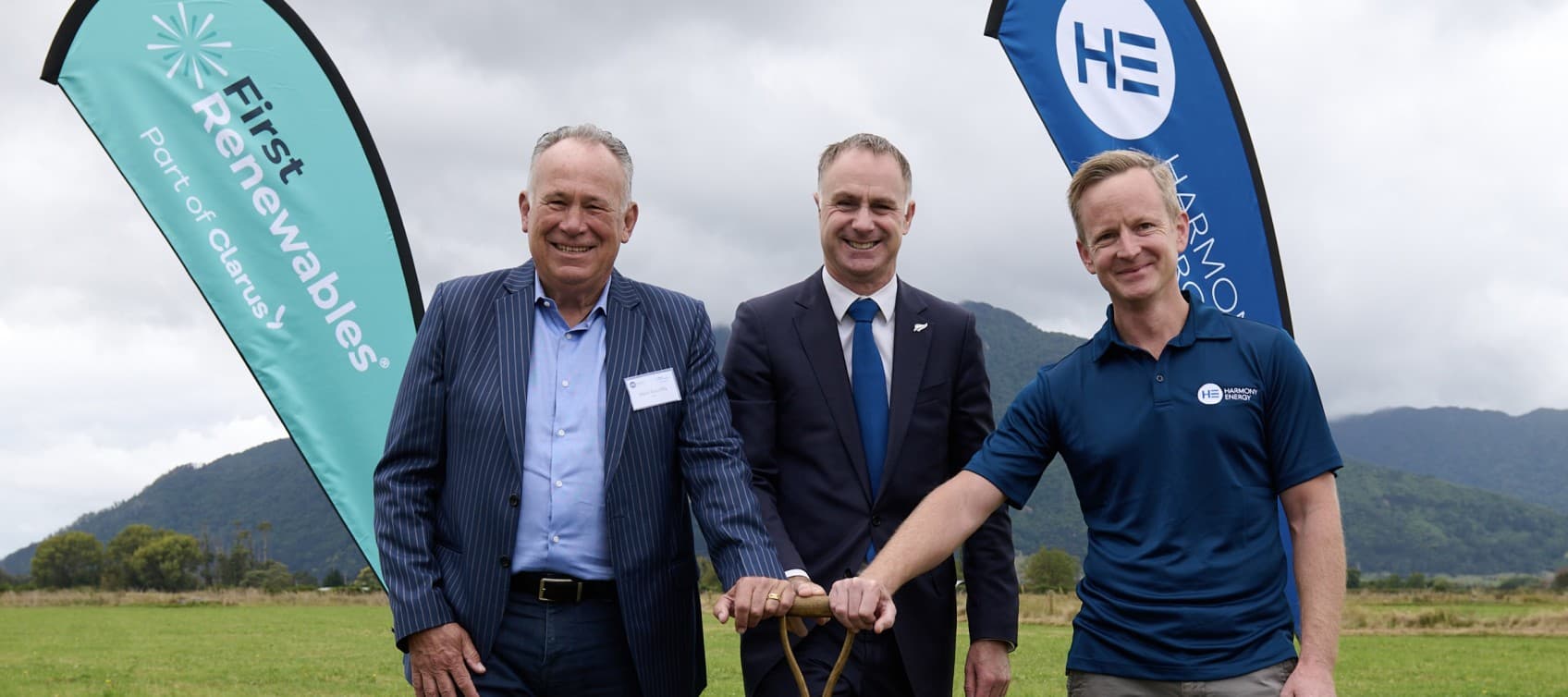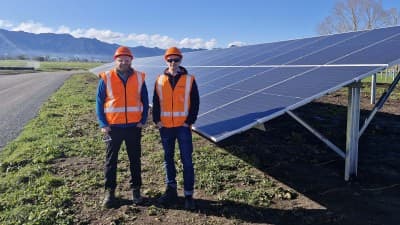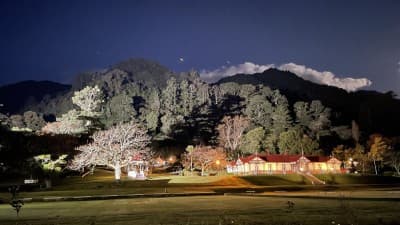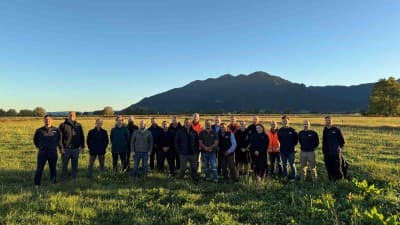Construction on New Zealand’s largest solar farm project officially began today at Te Aroha in Waikato, marking a significant milestone for the country’s renewable energy future.
Minister for Energy and Climate Change, Hon. Simon Watts, joined guests on site for a soil-turning ceremony for the project, a joint venture between Harmony Energy Limited and Clarus company, First Renewables.
The solar farm, which is expected to be commissioned by late 2026, will cover 182 hectares and generate 280 gigawatt hours of electricity per year, enough renewable electricity to supply the equivalent of approximately 35,000 New Zealand homes and businesses.
Harmony Energy director and founder Pete Grogan and Clarus GM Future Fuels James Irvine welcomed Minister Watts and fellow guests to the event.
“We are pleased to have reached this major milestone in a project that heralds a significant step forward in New Zealand’s pursuit of providing cleaner, home-grown energy,” said Mr Irvine.
“At the time of commissioning, it is expected to be New Zealand’s largest solar farm at 202 Megawatt-peak (MWp).
“It sets a benchmark for large-scale solar projects, reinforcing the growing role of solar in New Zealand’s renewable energy landscape.”
Mr Grogan said the solar farm project is supported by a power purchase arrangement with Meridian Energy, which will purchase 100% of the output for the first 10 years of operation.
“The project demonstrates how government, industry, and financial institutions can work together to meet New Zealand’s energy security and climate goals.
“The Government's Fast Track Act plays a key role in enabling renewable energy development and accelerating the transition to a low-carbon economy.
“We would like to thank the Te Aroha West community for their support, we could not do this without them. We’re committed to being a good neighbour throughout the construction period and once the solar farm is operational in late-2026.
“We also acknowledge and thank Ngāti Haua and Ngāti Tumutumu for their partnership and for the sharing of knowledge, traditions, and connection to the land with us.”
Energy and Climate Change Minister Simon Watts said it’s great to see the renewable energy project move into the construction phase.
“New Zealand needs more abundant and affordable renewable energy to power households and keep businesses running.
“Solar power presents a real opportunity to strengthen our energy supply, lower power prices, and boost the economy by creating more jobs in the Waikato. I look forward to seeing this project come to fruition and contribute to the Government’s goal to double renewable energy by 2050.”
Mr Grogan said the construction of the solar farm will create up to 350 full-time equivalent jobs at peak, along with permanent roles once construction is completed.
“The project will enhance the biodiversity of the farm with the planting of 100,000 native plants and the restoration of a wetland. Around 25,000 native plants have already been planted on the boundary of the solar farm site to ensure screen planting is established as early as possible.
“Sheep will be farmed on the site, with the solar panels offering shelter and showcasing how agriculture and renewable energy can work together.”
The joint venture has appointed Elecnor, a leading global renewable energy engineering procurement and construction contractor, as the lead construction partner to build the Tauhei solar farm.
The project is the result of strong industry collaboration and investment and reflects a long-term investment in New Zealand’s clean energy future. It is backed by a syndicated debt facility from ANZ, ASB, BNZ and MUFG Bank.
Harmony
Sam Halstead
027 474 6065
sam@latitudesc.co.nz
Clarus
Cressida Gates Thompson
Cressida.Gates-Thompson@clarus.co.nz





